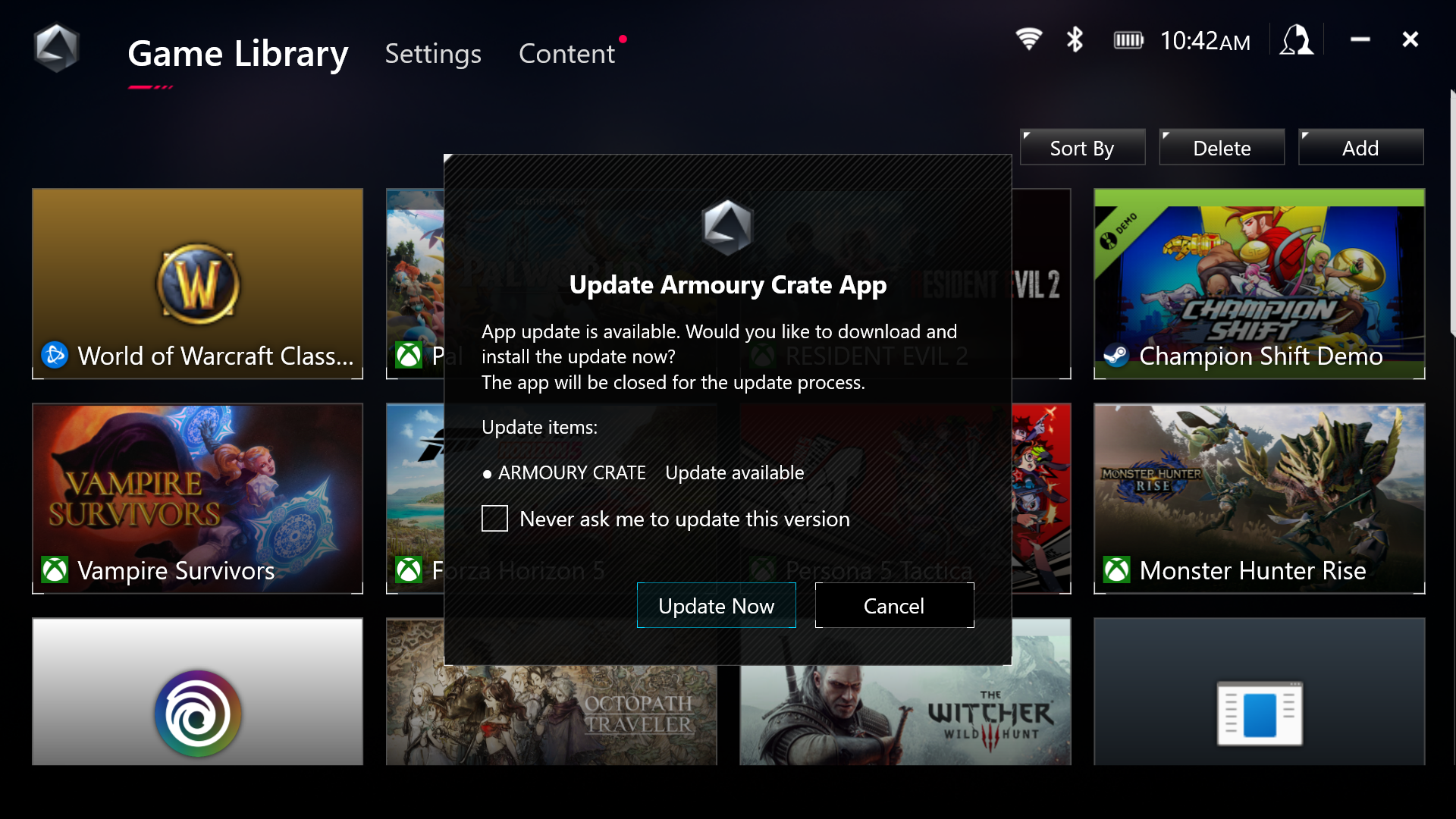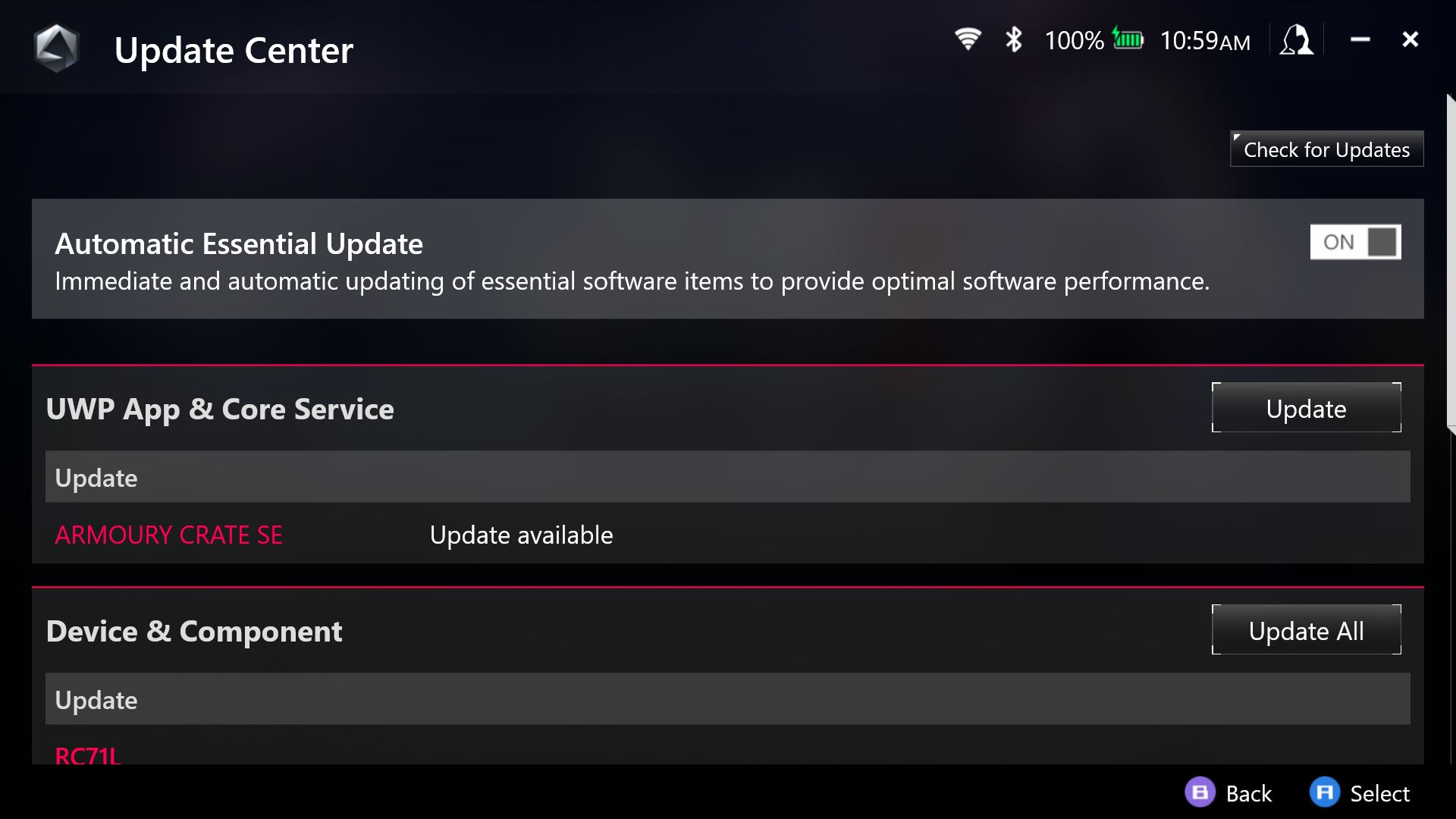ASUS ROG Ally's latest update brings great quality-of-life changes to the handheld (and mentions status of AMD Fluid Motion Frames)
ASUS pushed a new Armory Crate update that has some great quality of life updates.

What you need to know
- The ASUS_ROG X (Twitter) account posted about a new update for the ROG Ally.
- A handful of quality-of-life features have been added to the Command Center.
- The highly awaited AMD Fluid Motion Frames is not ready for release yet on the ROG Ally and is awaiting AMD certification.
ASUS is an excellent example to other manufacturers looking into the PC handheld market but continually updating and improving the ASUS ROG Ally. The Ally has been a successful endeavor for ASUS. However, it is still nice to see a company listening to community feedback and working to improve its product, even with rumors that the ASUS ROG Ally 2 is on the way.
If you're a new ROG Ally user or are looking for more games to play, make sure to check out our guide on the best games for the ROG Ally, as well as how to boot your ROG Ally to the SteamUI if you're looking for a more straightforward gaming experience.
Let's go ahead and look at the newest update from ASUS for the best PC handheld on the market.
Changes and Improvements: ACSE 1.4.10
New TDP options in the Command Center
There aren't a ton of changes in this newest update, but a few of the changes show that the ROG Ally team is listening to fan feedback. They posted the updates on the ASUS_ROG X (Twitter) account. Take a look at the post below.
We've released a new update to Armoury Crate SE, with a few small enhancements and a quick access TDP slider. To adjust TDP on the fly, put your Ally in Manual Mode and you’ll be able to change the SPL, SPPT, and FPPT right from the Command Center. pic.twitter.com/jrmoX0EMSLJanuary 29, 2024
- To adjust TDP on the fly, put your Ally in Manual Mode and you’ll be able to change the SPL, SPPT, and FPPT right from the Command Center.
- Added quick Manual Mode adjustment options for SPL, SPPT, and FPPT in the Command Center.
- Users can now assign the Gyro Enable feature to multiple buttons.
- A “Never show again” option has been added to the Campaign popup.
- New Game Profiles will have their Operating Mode set to "Unassigned" to prevent conflicts when changing the global Operating Mode through the Command Center.
Not sure what TDP stands for? Don't worry it can be pretty confusing. You can learn more about what TDP is in our article. Likewise, SPL stands for Sustained Power Limit, which is the power consumption that the CPU should be able to maintain under load permanently. SPPT stands for Slow Package Power Tracking Limit. This is the boost limit of the CPU, lasting 28 seconds to several minutes. Finally, the FPPT is Fast Package Power Tracking Limit, which is the short burst limit of the CPU, lasting around 5 seconds.
Updating your ROG Ally.
When your ROG Ally first boots up, it should load Armory Crate, and this update image should pop up. Go ahead and follow the on-screen instructions to update the device. You must restart your ROG Ally to make the update take effect. If the pop-up is not coming up for you, head into Armory Crate, click on Content at the top, and then go to Update Center.
What's new in the ASUS ROG Ally update?
Once you have the device updated, you should start noticing a few changes through Armory Crate and the Command Center. The number one change for me was the option to click A “Never show again” option on the annoying ROG Ally Campaign popup.
All the latest news, reviews, and guides for Windows and Xbox diehards.
On top of that, they have made it much easier to change the Manual Mode for TDP, which is a massive bonus because some games will run better at 20 watts rather than 15 or 20, and now those can be adjusted mid-game rather than having to go into the Armory Crate to adjust them.
This should be great for optimizing your gaming session to extend battery life while maintaining the desired FPS.
When is the ASUS ROG Ally getting AMD Fluid Motion Frames?
While AMD has already released AMD Fluid Motion Frames on their desktops, they haven't yet been released on the ASUS ROG Ally. I'm personally pretty excited to see what kind of benefit the small handheld can get from this new frame-generation-like technology.
We also know our community is anxiously awaiting the release of a new driver supporting AMD Fluid Motion Frames. While AMD has recently launched this feature on desktop platforms, the driver still requires some testing on our end, and then will await certification from AMD before the final ROG Ally release. We know you are very excited to try out AFMF (we are too!), and we’re working to get it to you as soon as possible.
@ASUS_ROG on X (Twitter)
Once AMD FMF, or AFMF for short, releases on the ROG Ally, check out our coverage to see how much of a performance boost we can benchmark on our ROG Allys. It's good to see that ASUS is working to continue supporting and improving the end-user experience on ROG Ally. I love mine; it has replaced my Nintendo Switch for handheld gaming.
If you haven't jumped on the ASUS ROG Ally train yet, it's the perfect time. The handheld is still discounted at BestBuy. Not sure about picking up the Z1 non-extreme version? I have one and love it. I think it's a much better option than the Steam Deck.

Colton is a seasoned cybersecurity professional that wants to share his love of technology with the Windows Central audience. When he isn’t assisting in defending companies from the newest zero-days or sharing his thoughts through his articles, he loves to spend time with his family and play video games on PC and Xbox. Colton focuses on buying guides, PCs, and devices and is always happy to have a conversation about emerging tech and gaming news.



